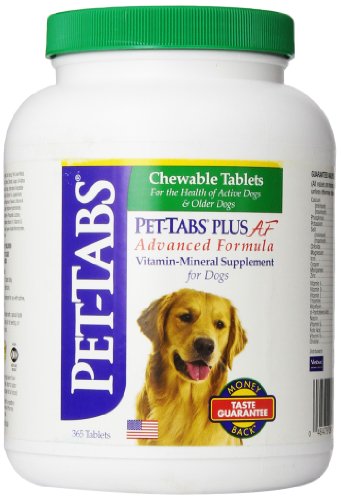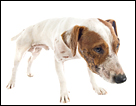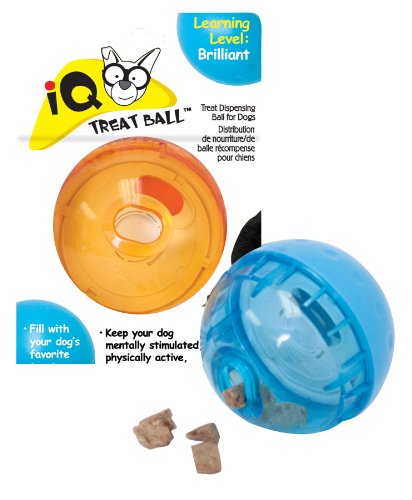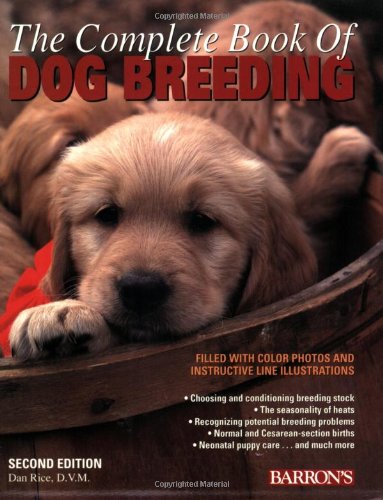
This article is for anyone who is considering buying or adopting a pure bred dog. If you are buying, it’s always advisable to find a breeder in your area who is long established with the breed you’re interested in. Don’t get in too big a hurry. Meet the parent dogs if at all possible. Ask the breeder what they do with the puppies before they leave the kennel to help with their temperament and to help them adjust to their new home when they leave. If the parent dogs aren’t OFA certified and/or if their pedigrees aren’t complete and available to you, move on. Responsible breeders will understand your concerns and will take the time to answer any and all questions because they want their puppies to succeed as much or more than you do. A responsible breeder will also want to spend some time getting to know you.
If you are adopting, these things won’t be possible, but this guide can hopefully still help to acquaint you with the breed. There are a lot of moving parts that can lead to success or failure with a new dog, so let’s look at the most important part of the equation first...

YOU
There are many factors to take into consideration when choosing the right dog breed for you and your living situation. Probably the most important and least considered is how much and what kind of interaction are you willing to commit to over the life of your dog? The training, exercise and grooming requirements for a Chihuahua are far different than those of the Great Pyrenees, and prospective dog owners who consider appearance only should rethink their criteria. Dogs are individuals just like humans, so there are no 100% hard and fast facts about any breed, but every breed of dog has needs and traits unique to them. It must always be remembered that every pure breed of dog was bred carefully and selectively over many generations to arrive at a set “type” of dog. Some dogs were bred for their appearance and some were bred for their temperament, but most were bred for particular behaviors that would serve their owner’s purposes. All these things should be thought through honestly and thoroughly before deciding on what dog is best for you and your family. Before we break down the breeds by group, let’s break down the prospective owner, shall we?
LIVING SITUATION
In what kind of environment is your dog going to be living? Will he spending his days cooped up in an apartment or does he have an acre out back in which to run and play? Is the dog going to be an inside dog or an outside dog? Will he be left alone for long periods of time?
These are all important factors in how well your dog will adapt to living with you. Some breeds require very little space to be healthy and some need acres. The size of the dog is not the sole determining factor here. Some large dogs do very well with relatively little physical activity and some small dogs need to run around almost constantly. Do your homework.
OWNER INTERACTION
How much time are you realistically going to commit to training and exercising your dog each day? Not just the first two weeks, but for as long as you own the dog?
If your dog is going to be left alone for long periods of time and walked only occasionally, perhaps you should consider an aquarium. Dogs are pack animals and need to live in a social situation to be healthy. They need contact, both physical and emotional. They especially need to feel a part of the family unit. Be honest with yourself and decide how your dog is going to spend their days and nights.
I currently have a Rhodesian Ridgeback. Sitting on the couch with a cold beer in one hand and the remote in the other is not high on my list of daily activities and can’t be if my dog is going to prosper. I walk my dog every morning before I leave for work (short walk, maybe a half hour), every day when I get home (long walk, at least an hour, sometimes two or three) and she sleeps right next to our bed every night. I might miss a walk here or there, but I never go a whole day without getting her out on the leash for some training and play time. If I didn’t do that, she’d get fat and go nuts. I’m not telling you these things to make myself sound good, but to illustrate the point that if you want to do right by your dog it takes commitment. Not all breeds require that kind of time and activity level, so choose a breed that will match your willingness to meet their needs.
Also consider this; what are you planning on doing with this dog? Do you want a dog to jog with? Backpack or hike with? Play frisbee with? Sit on the couch with? Obedience, agility, hunt? Raising and training a puppy to adulthood is only less time consuming than raising a child because it doesn’t take eighteen years and dogs can’t talk back (but they do listen better most of the time). Think this all through as honestly as you can so you don’t end up short-changing your dog down the road, or worse, dropping him off at the local animal shelter.
YOUR EXPERIENCE
Is this the first dog for which you’ve been the trainer and caretaker? Have you ever even owned a dog before?
If you watch “The Westminster Dog Show” on TV, you’ll hear the narrator give a brief description of each breed as they’re introduced. About certain breeds you’ll hear him say something along the lines of, “This breed is not suitable for the first time owner” or “This dog requires a strong owner whose willpower can match the dog’s”. And by strong, he doesn’t mean physically strong. A dog has to know you’re the boss and it’s up to you to instill that. If your dog gets by you once you’re going to have to correct them three times to overcome that. If they get by you ten times, it’s pretty much over. The dog is now the boss. You have to be very cognizant of any breed’s temperament, and yes, dogs are individuals and there can be a wide variance in even one litter of puppies, but every breed was bred for a purpose, remember? There are consistent traits in all breeds, and temperament is one. Choose wisely and be honest about how much real experience you have successfully training dogs before you pick.
One last thought here. Always bear in mind that the root word for “discipline” is “disciple”. Discipline means teach, not punish, and it especially doesn’t mean “hit”.
Alrighty then, enough about you! Let’s talk about your dog!
WHAT’S THE RIGHT DOG BREED FOR YOU?
As mentioned earlier, every pure breed of dog was bred for a specific purpose. As dog owners, that is something that a lot of us humans seem to have forgotten. That doesn’t mean that a dog is only good for what they were originally bred for. Labrador Retrievers make great service dogs, and most of the Labs out there are family pets and never hear a shotgun blast or swim out in freezing water to retrieve a fallen duck. But, if you do get a Lab and you have a swimming pool, don’t get mad if he won’t stop jumping in. Ninety-nine percent of the time, breeding will out when it comes to your dog’s behavior. Asking my Ridgeback to stop chasing rabbits is like asking the tide to stay out. It ain’t gonna happen. Make sure you know what your dog was bred to do so you won’t be too shocked when he does it!
For the sake of simplicity and to give you, the reader, a place to check my assertions if you so desire, I’m going to use the American Kennel Club (AKC) groupings for dog breeds to break down what you can expect from your prospective puppy. I am NOT going to list breed by breed (that would take up WAY too much time and space), but instead we’ll go group by group. This will give you a general idea of what to look for.
SPORTING DOGS
The Sporting Group is comprised of bird dogs. Setters, spaniels, pointers and retrievers. These dogs operate primarily on instinct, and because of that they tend to be independent thinkers. Some, but not all, can be kind of tough to obedience train. There are a wide variety of coats, so the grooming requirements will vary considerably. The constants you’re going to find here are dogs that need a lot of exercise to stay healthy and happy, even tempered, but tend to do their own thing. These dogs were never intended to do man’s bidding. They’re not guard dogs or working dogs. They’re bred to do something that you and I can never fully understand the workings of, so don’t be surprised when they get a notion and follow through on it no matter how many times you’ve asked them not to.

TERRIERS
What I’m about to say here is my opinion and mine only. I’m not asking you to agree or disagree. I’m just asking you to listen and know that I’m talking about all terrier breeds, not just the ones who get the all bad publicity. I would be remiss to not state what I believe.
The terrier breeds originated as single minded vermin killers, bull baiters and pit fighters. They were all bred for gameness and aggression, there can be no dispute about that. They were bred to pursue, kill and fight to the death no matter how badly injured they get in the process. Most, but not all, were bred to go to ground in the pursuit of small game (Terra;Terrier). Some were bred for above-ground work, but they were all bred to kill fearlessly. Those traits have diminished over the years, but they are still present, so don’t kid yourself about that. You would be very wise to keep that in mind if you choose one of these breeds.
The typical terrier personality is one of being good with people and aggressive towards other dogs with a very strong prey drive. Terrier breeds require strong owners who have the patience and willpower to socialize and obedience train them. Most terriers are small, but that doesn’t stop them from being a handful. They’re also gorgeous, highly intelligent and very trainable. Just not easy or to be taken lightly.
HOUNDS
Straight up hunting dogs, hounds are divided into two types: sight hounds and scent hounds. Just as you would expect, sight hounds hunt with their eyes and scent hounds hunt with their noses. Sight hounds include Greyhounds, Whippets, Salukis, Borzois, Afghans, Scottish Deerhounds and Irish Wolfhounds. Scent hounds include Bloodhounds, Basset Hounds, Beagles, Coonhounds, etc. Basically, sight hounds are all the Greyhound shaped dogs and Scent hounds all the Bloodhound shaped dogs. There is some controversy on this topic. Basenjis, Rhodesian Ridgebacks, Pharaoh Hounds and Ibizan Hounds are listed as sight hounds by the AKC, but not by other governing bodies.
The hound breeds all share the stamina and willpower to relentlessly pursue their quarry over varying distances and run them down, but the temperaments of these breeds are tough to pigeon hole. Overall they tend to be independent, sweet but a little distant with people and tough to obedience train. Definitely NOT guard dogs. Just like their bird dog cousins, they are bred to do things which we cannot understand, and they’re fine with that. When it comes to obedience, these dogs require a very patient owner who is willing to teach them the same things over and over again until the light bulb goes on over their heads.
WORKING DOGS
These are the dogs that WERE designed to do the things we understand. These are the guard dogs, the sled and wagon pullers, the police dogs and the dogs who come to our rescue when we are drowning or lost. These dogs tend to be larger and stronger than their sporting cousins. This group is also where you will find a dog who will look to you for direction more than any other. They are here to do your bidding, and as such tend to be great companions and are generally easy to obedience train. A huge variance in coats and health considerations, but overall, this is the most tractable and easy going group of dogs to own. If you look to this group for a pet, just be sure to do your homework as a couple of these breeds have very strong guarding instincts and can be problematic if you have a lot of visitors of either the human or canine variety. The aforementioned size and strength means obedience training is a must.
HERDING DOGS
This is where the highly caffeinated Type-A personalities of the dog world reside. These dogs are extremely driven to work and bring a great deal of focus to whatever task is at hand, whether it is herding sheep, running agility trials or destroying your couch. These dogs need a job, and if you don’t provide one they will find one for themselves. Almost without exception these breeds are noisy, nippy and hyperactive. Again, just my opinion, but most of these breeds are not a great choice for a family pet, unless you like noisy, nippy, hyperactive family members. BUT, if you want to play frisbee, do agility or herding trials, or need a police dog, here is where you should to look.

TOY DOGS
Just as the name implies, these are the tiny, mostly fuzzy and shaggy, lap sitting foo-foo dogs. Some have ridiculously long hair, some have very short hair and some have almost no hair. Just because they are small doesn’t mean they are easy going, though. Some of these little guys are feisty, scrappy little devils and some are lap-sitting cream puffs. There a lot of advantages to small dogs, though. I have personally owned a Chihuahua and a Pomeranian, and they were both very cool little dogs. They have big personalities, they make smaller “messes” and they generally require less area to run around and stay healthy. It’s also a lot easier to deal with an eight- or ten-pound dog hopping up on the couch than a ninety-pound one. If you are looking for a dog to chill on the couch with while you watch TV, this is a great place to look.
NON-SPORTING DOGS AND MISCELLANEOUS DOGS
These two groups are so diverse as to make it impossible to generalize about anything. They vary in every possible way from size to coat type to intended occupation to whatever. Non-Sporting dogs are the breeds that didn’t really fit anywhere else too neatly such as the Chow-Chow, the Dalmation and the Bichon Frise. The Miscellaneous dogs are breeds recognized in other parts of the world that have not yet been fully admitted into the AKC due to their low numbers here. If one of these breeds has piqued your interest, the best thing to do is look up their breed standard and see if they sound suitable to your needs.
SUMMARY
Evaluate yourself and your willingness to care and train for a dog before you decide on what you breed of dog you get. DO NOT buy a dog based on appearance alone. DO NOT take a dog because you know someone that needs to get rid of a litter of puppies. The shelters and rescue houses are full of dogs who were obtained by people who thought a dog looked cool or the price was right and then found out the dog was too much for them. Be sure you can afford the inevitable trips to the vet, the food and most importantly the time to exercise and train you pet. Be sure you get a dog that matches your ability and experience level to train and socialize it, and remember above all that to be a truly responsible dog owner, you’re looking at a ten or fifteen year commitment.
If you are honest with yourself and choose wisely, if you take the time to care for and train your pet, you will enjoy one of the most rewarding and pleasurable experiences of your life. You will also find out why a dog is truly man’s best friend. Good luck.
 The Effects of Nicotine and Secondhand Smoke on Your Dogs
Credit: CDC (PHIL) - Public domain
The Effects of Nicotine and Secondhand Smoke on Your Dogs
Credit: CDC (PHIL) - Public domain
 Regurgitation and Vomiting Differences in Dogs and Cats
Regurgitation and Vomiting Differe
Regurgitation and Vomiting Differences in Dogs and Cats
Regurgitation and Vomiting Differe
 Learn How to Tell if Your Dog or Cat is Obese and in Poor Health
Is your Dog Healthy?Dog and
Learn How to Tell if Your Dog or Cat is Obese and in Poor Health
Is your Dog Healthy?Dog and
 How To Treat Ticks On Dogs
About TicksKnowing about tic
How To Treat Ticks On Dogs
About TicksKnowing about tic
 Dog Pregnancy
After a dog gives birth, mos
Dog Pregnancy
After a dog gives birth, mos
Copyright © 2005-2016 Pet Information All Rights Reserved
Contact us: www162date@outlook.com